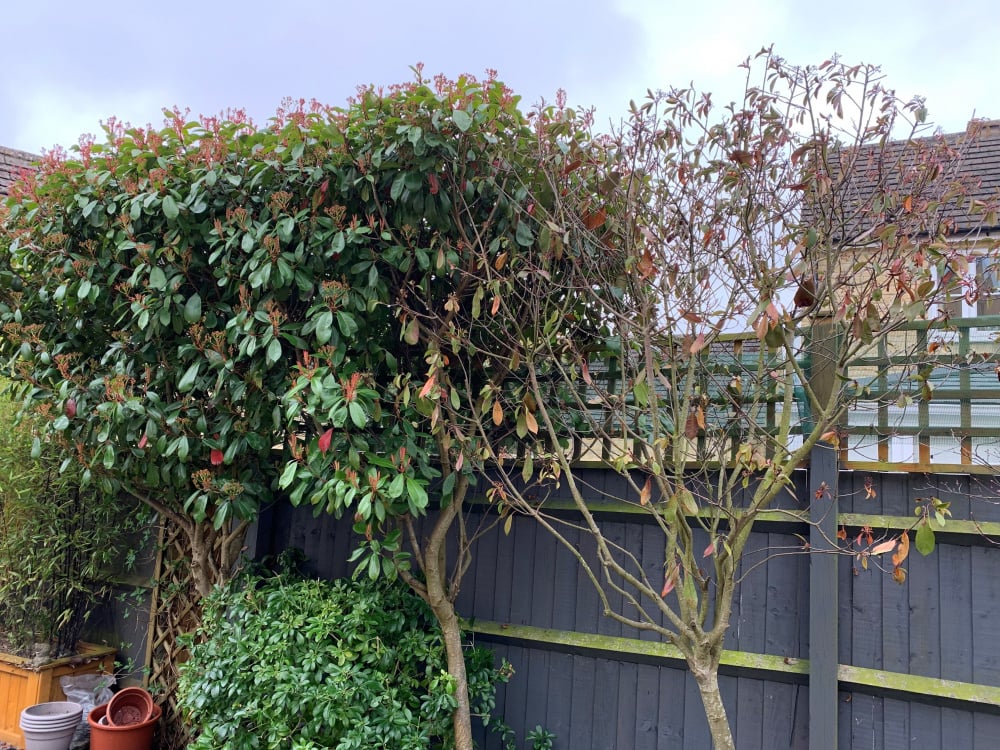This Forum will close on Wednesday 27 March, 2024. Please refer to the announcement on the Discussions page for further detail.
Red Robbin Dying
Hope someone can help, we have 3 mature (7yr old) red robin trees, last year after flowering one of them started to lose its leaves. Despite watering it has not started to come back this year. you can see in the image the tree next to it is doing well.
Any ideas of how to revive it or are we looking at a replacement?
Any ideas of how to revive it or are we looking at a replacement?

0
Posts
From Southern Living magazine:
The fungus that causes entomosporium leaf spot only attacks new, red growth. Mature green leaves are immune. Splashing water and wind spread the disease from leaf to leaf, so to prevent it, do the following things:
- Remove and destroy infected leaves.
- Do not wet leaves when watering.
- Avoid summer pruning, which results in a flush of susceptible new leaves.
- Spray the plant with chlorothalonil (Daconil) every 10 to 14 days from bud break in spring until all new foliage has matured.
- Unless you regularly spray with a fungicide, the disease eventually kills the plant.
Also from Southern Living:https://www.southernliving.com/garden/shrubs/red-tip-photinias-alternatives I am partial to osmanthus fruitlandii personally.
Do you need height at the top for screening or do you just want to fill the gap?
Regardless of what the problem is, I'd still consider replacement. The flowers don't smell very good.
You could invest in an expensive mature plant but larger plants are slow to establish and can be risky. Soil prep would be even more important.
Fast growing hedging such as Laurel, just keeps growing and long term a chainsaw is the only way to control it.
A dilemma, if you can give further thoughts hopefully more help will be given.